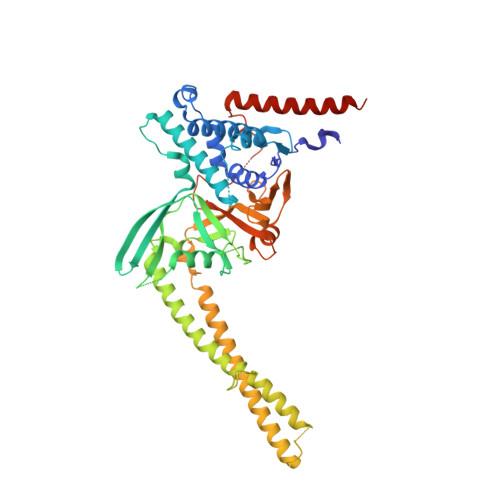Structural basis for the bi-specificity of USP25 and USP28 inhibitors.
Patzke, J.V., Sauer, F., Nair, R.K., Endres, E., Proschak, E., Hernandez-Olmos, V., Sotriffer, C., Kisker, C.(2024) EMBO Rep 25: 2950-2973
- PubMed: 38816515
- DOI: https://doi.org/10.1038/s44319-024-00167-w
- Primary Citation of Related Structures:
8P14, 8P19, 8P1P, 8P1Q - PubMed Abstract:
The development of cancer therapeutics is often hindered by the fact that specific oncogenes cannot be directly pharmaceutically addressed. Targeting deubiquitylases that stabilize these oncogenes provides a promising alternative. USP28 and USP25 have been identified as such target deubiquitylases, and several small-molecule inhibitors indiscriminately inhibiting both enzymes have been developed. To obtain insights into their mode of inhibition, we structurally and functionally characterized USP28 in the presence of the three different inhibitors AZ1, Vismodegib and FT206. The compounds bind into a common pocket acting as a molecular sink. Our analysis provides an explanation why the two enzymes are inhibited with similar potency while other deubiquitylases are not affected. Furthermore, a key glutamate residue at position 366/373 in USP28/USP25 plays a central structural role for pocket stability and thereby for inhibition and activity. Obstructing the inhibitor-binding pocket by mutation of this glutamate may provide a tool to accelerate future drug development efforts for selective inhibitors of either USP28 or USP25 targeting distinct binding pockets.
- Rudolf Virchow Center for Integrative and Translational Bioimaging, Institute for Structural Biology, Julius-Maximilians-University Würzburg, Würzburg, Germany.
Organizational Affiliation:



















